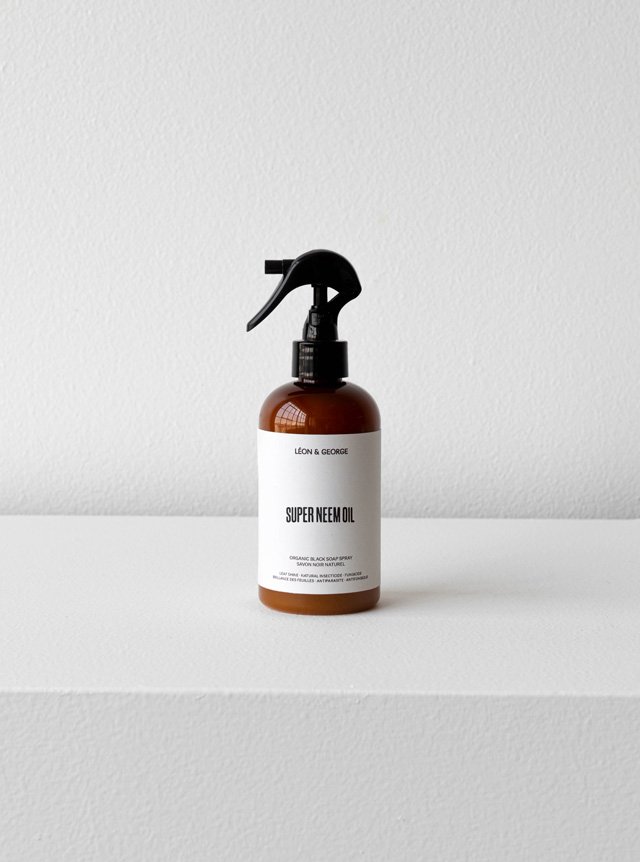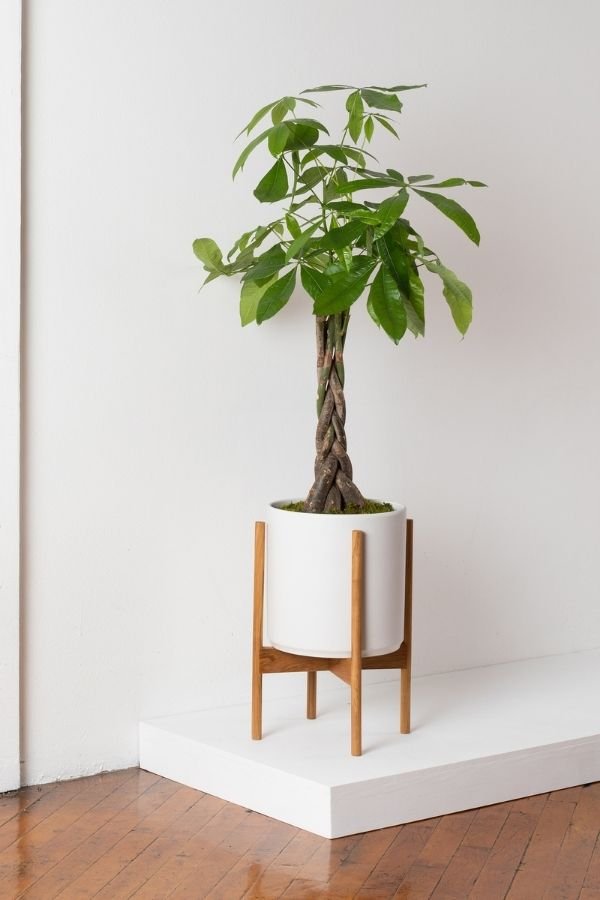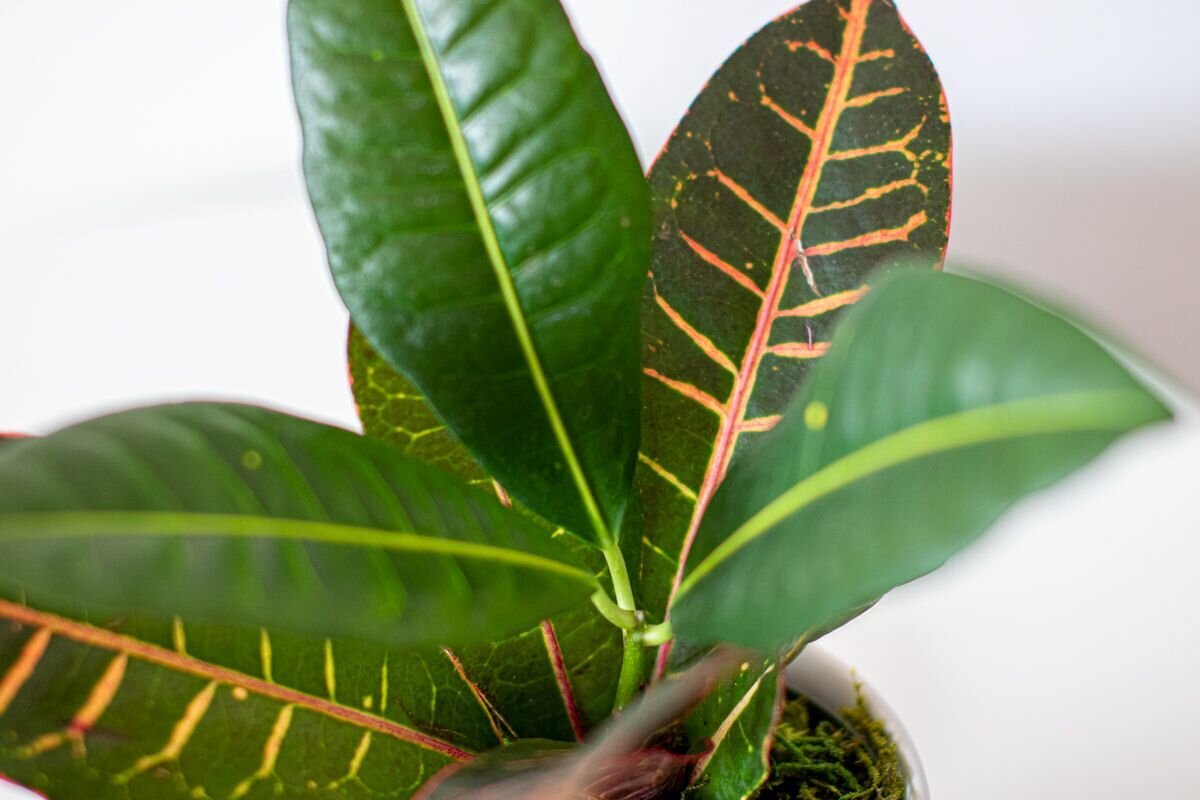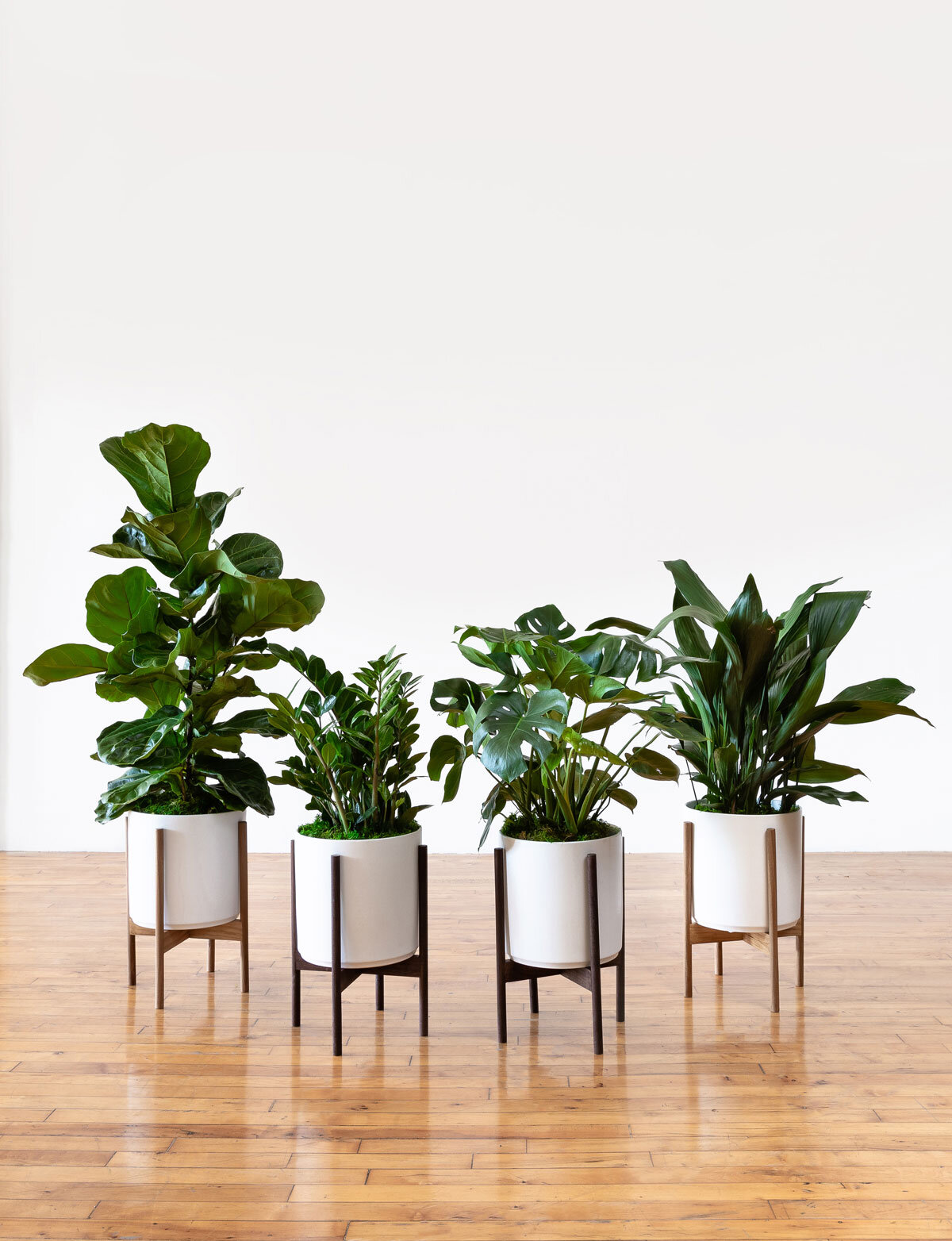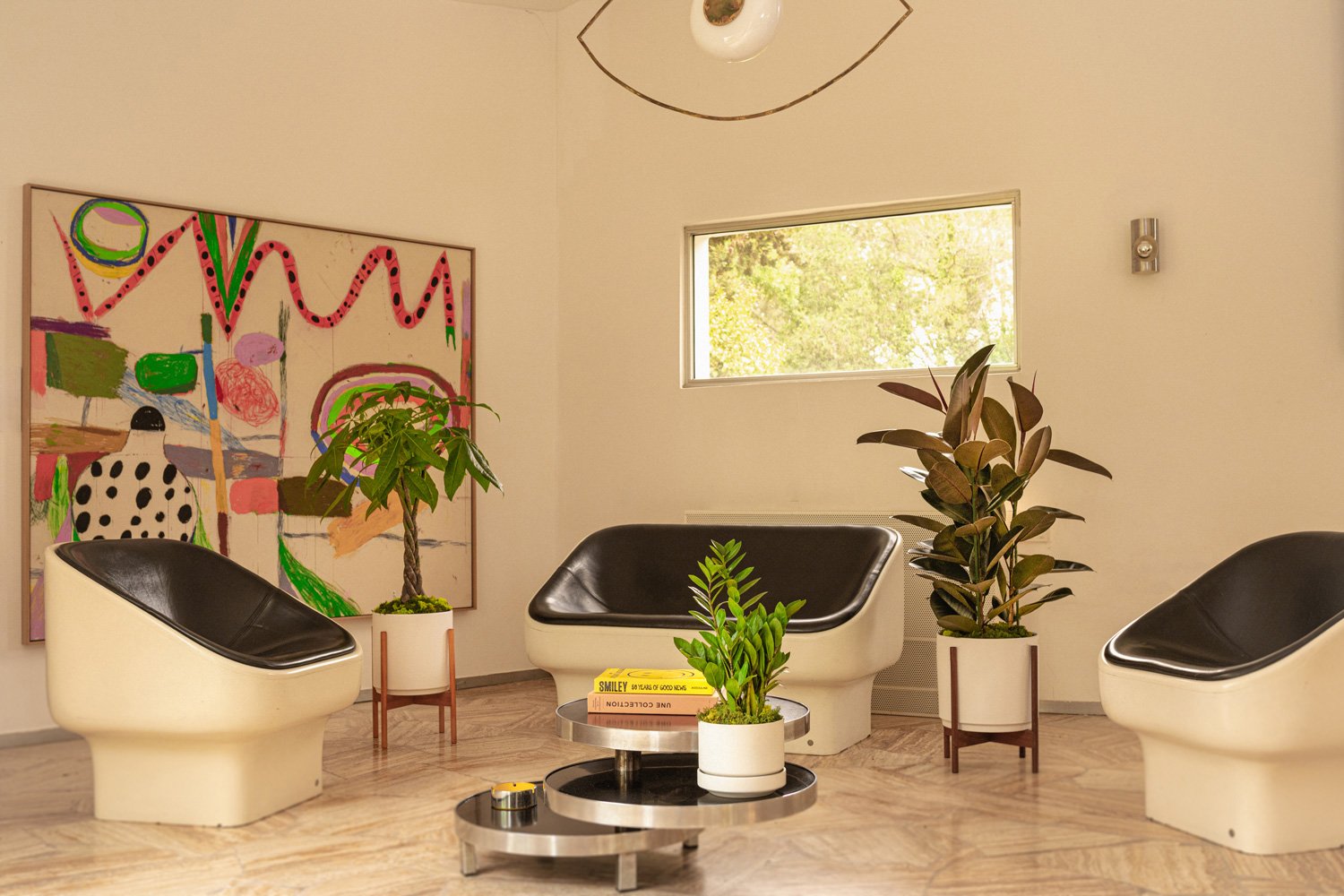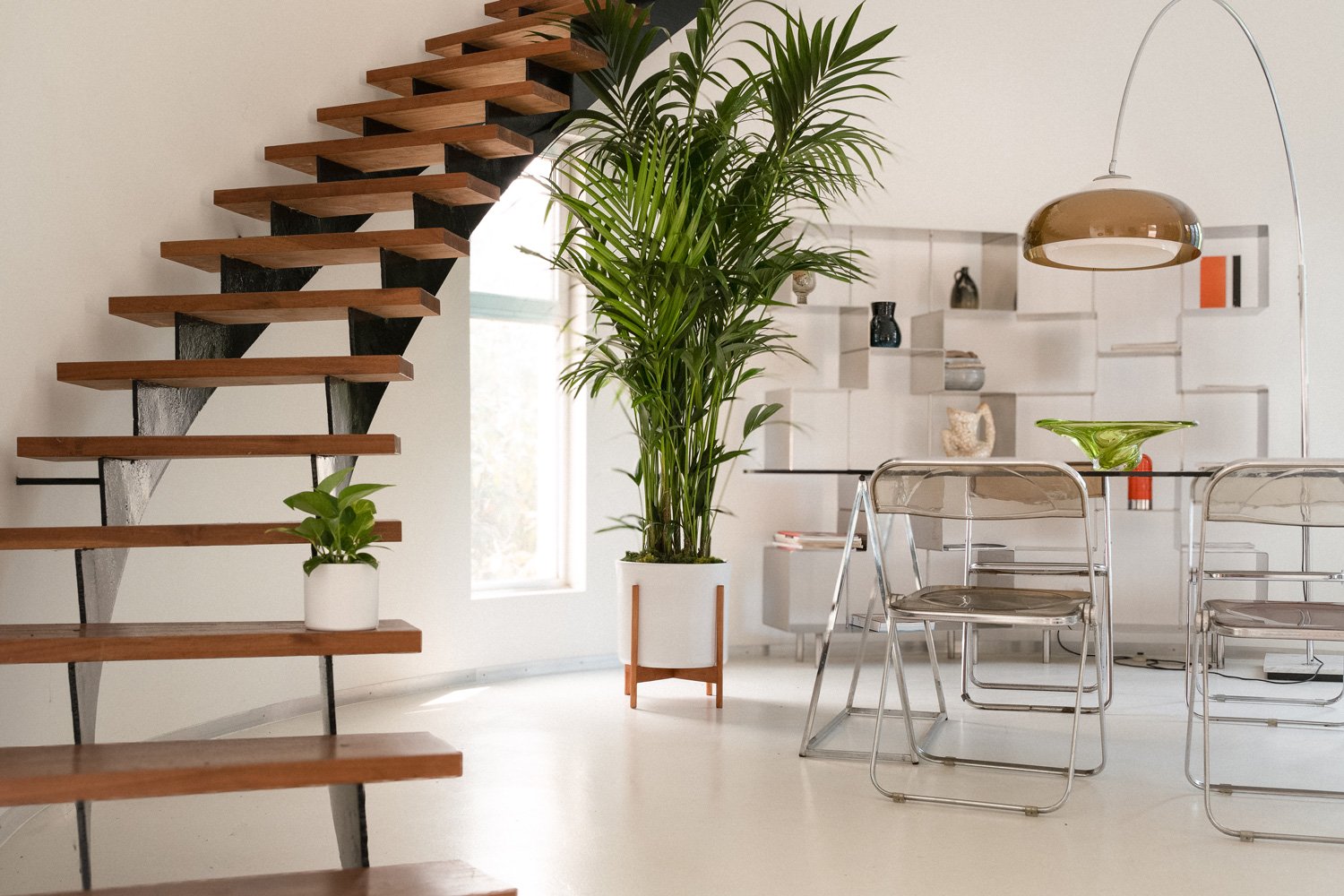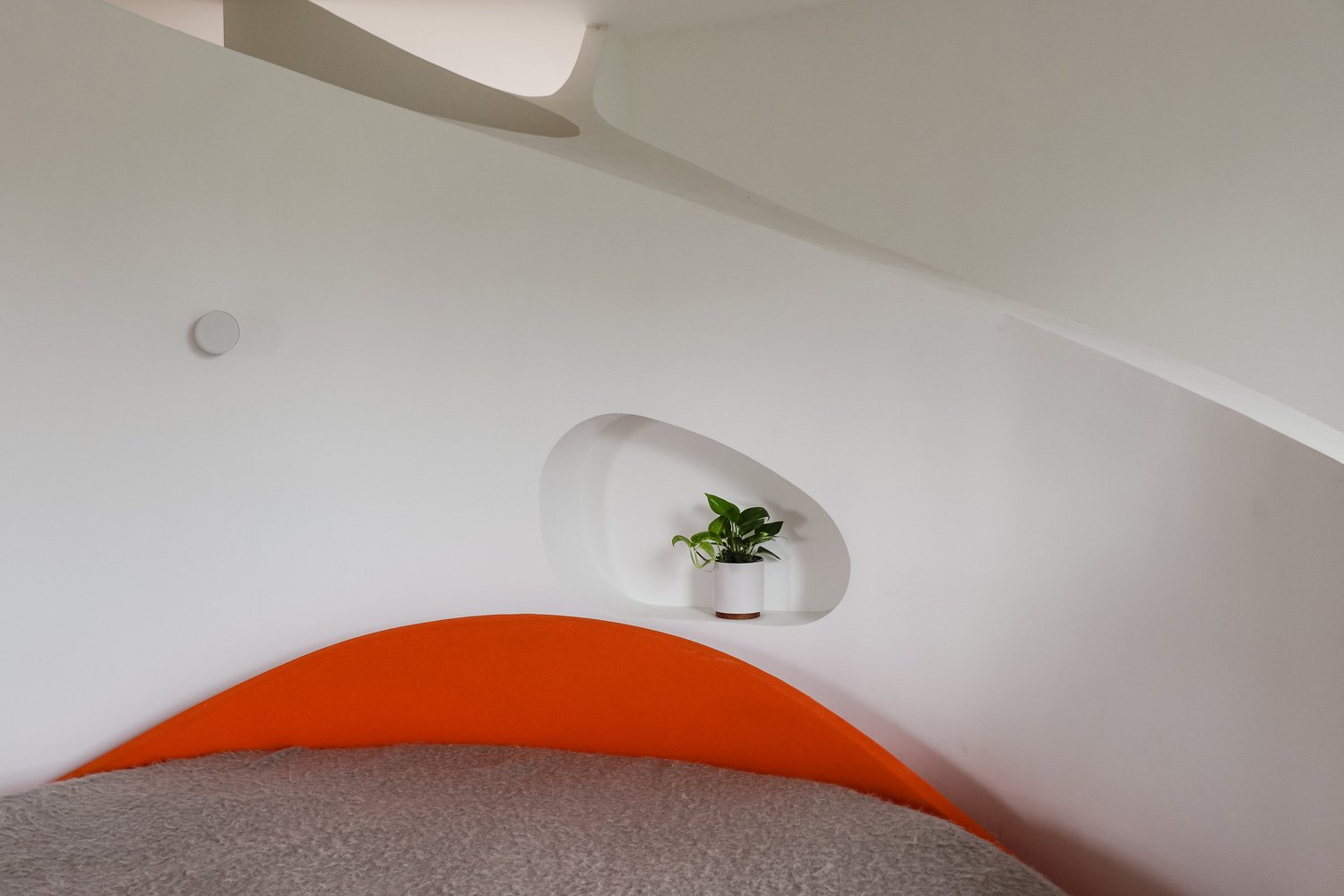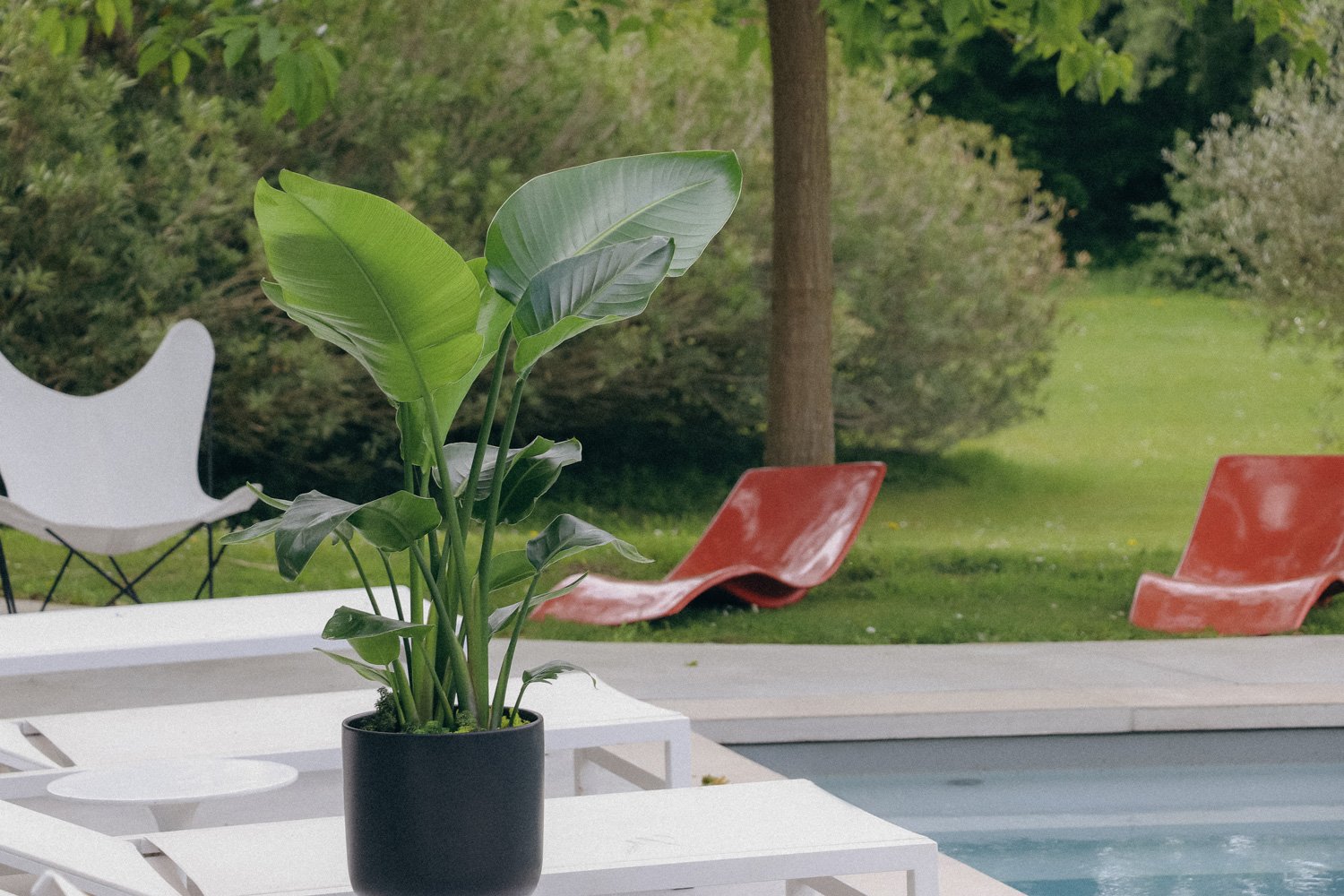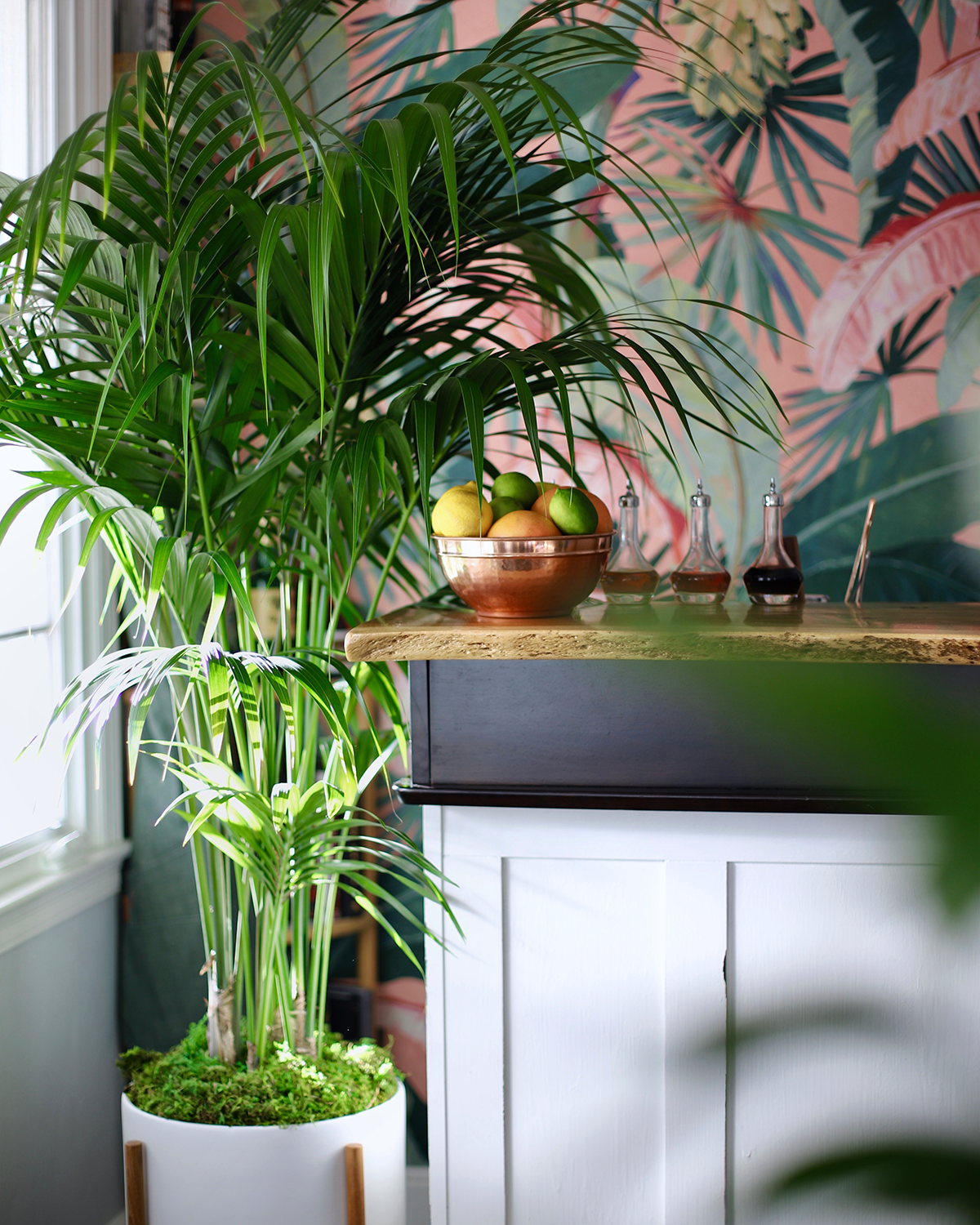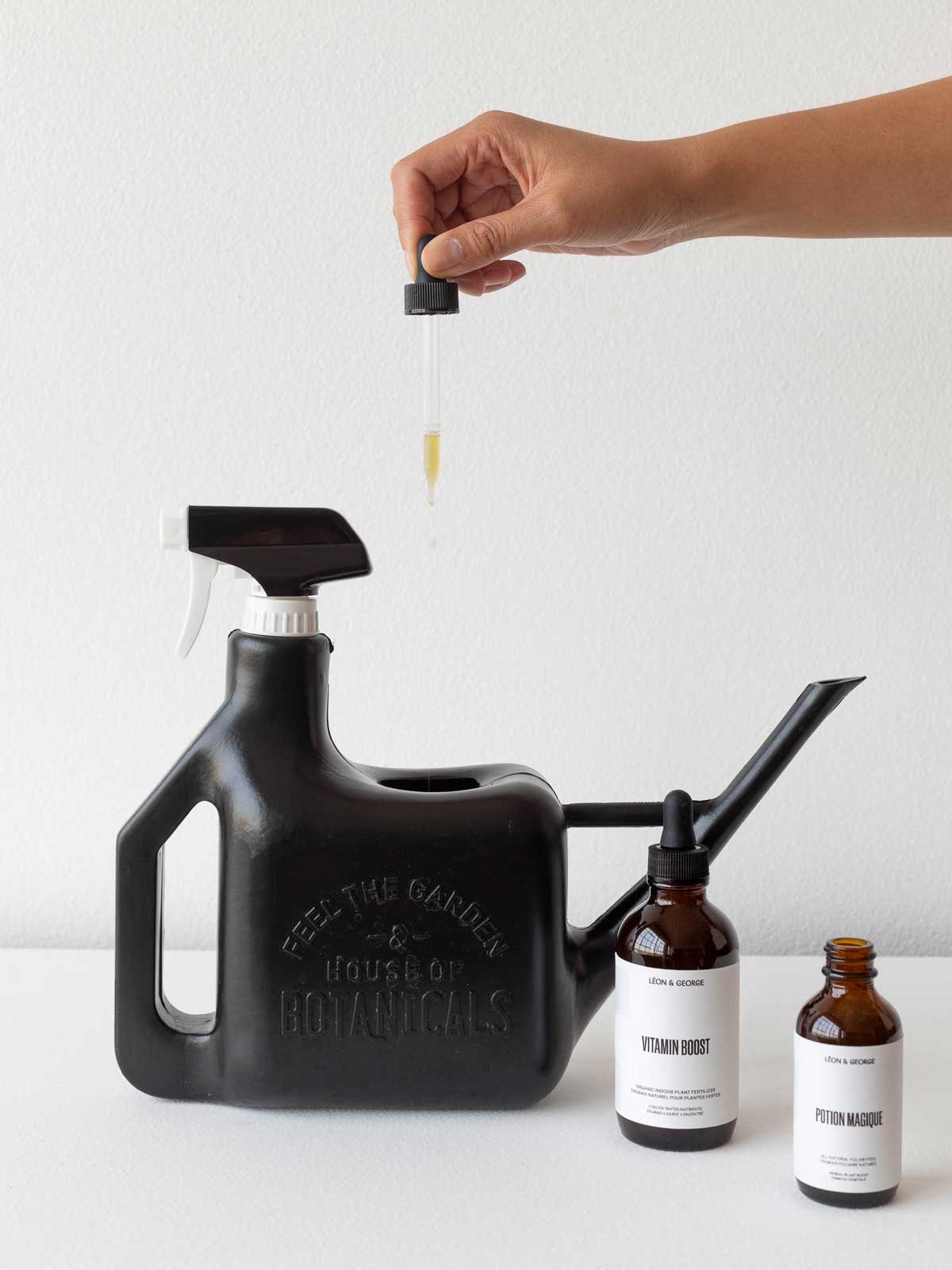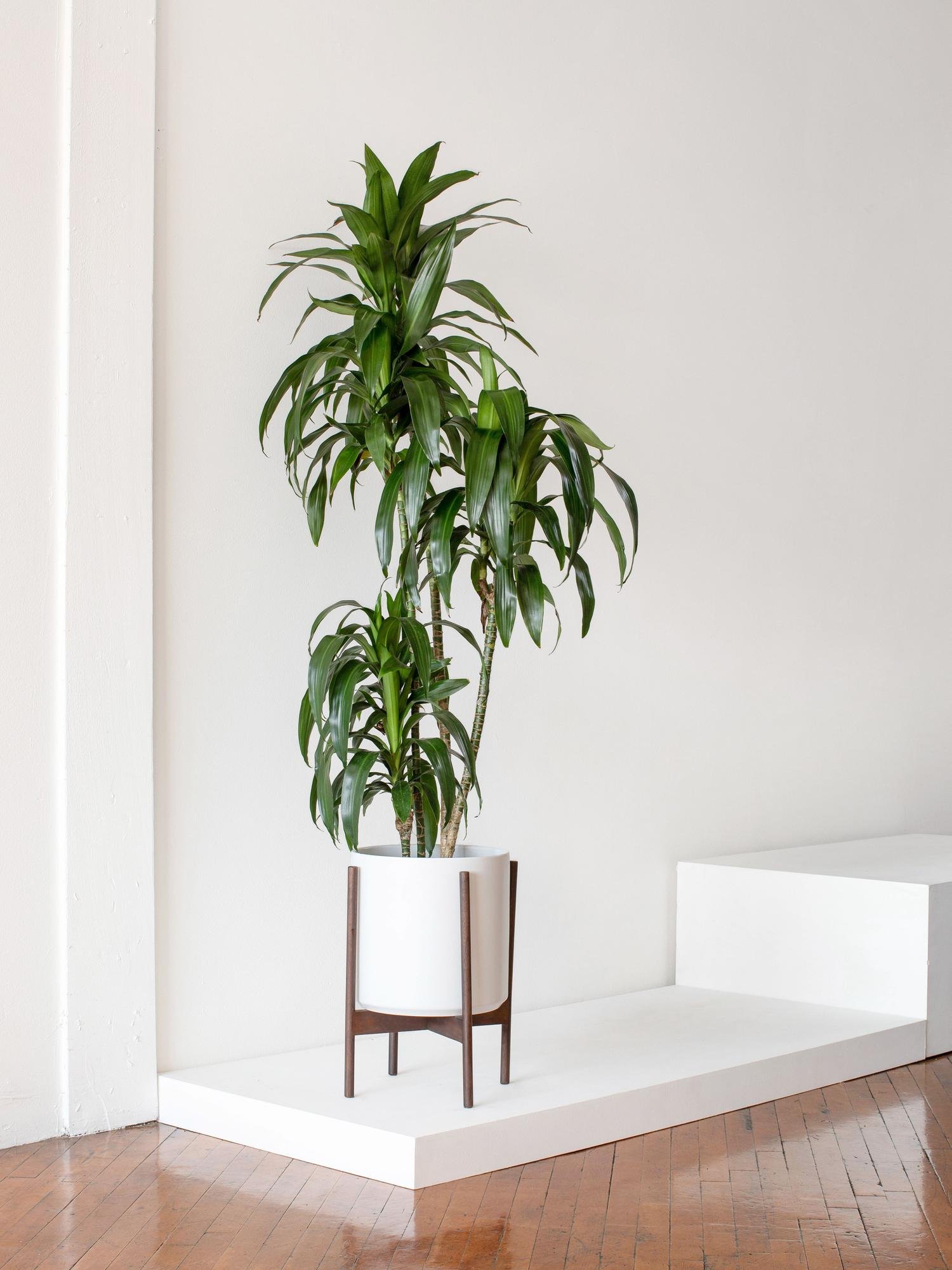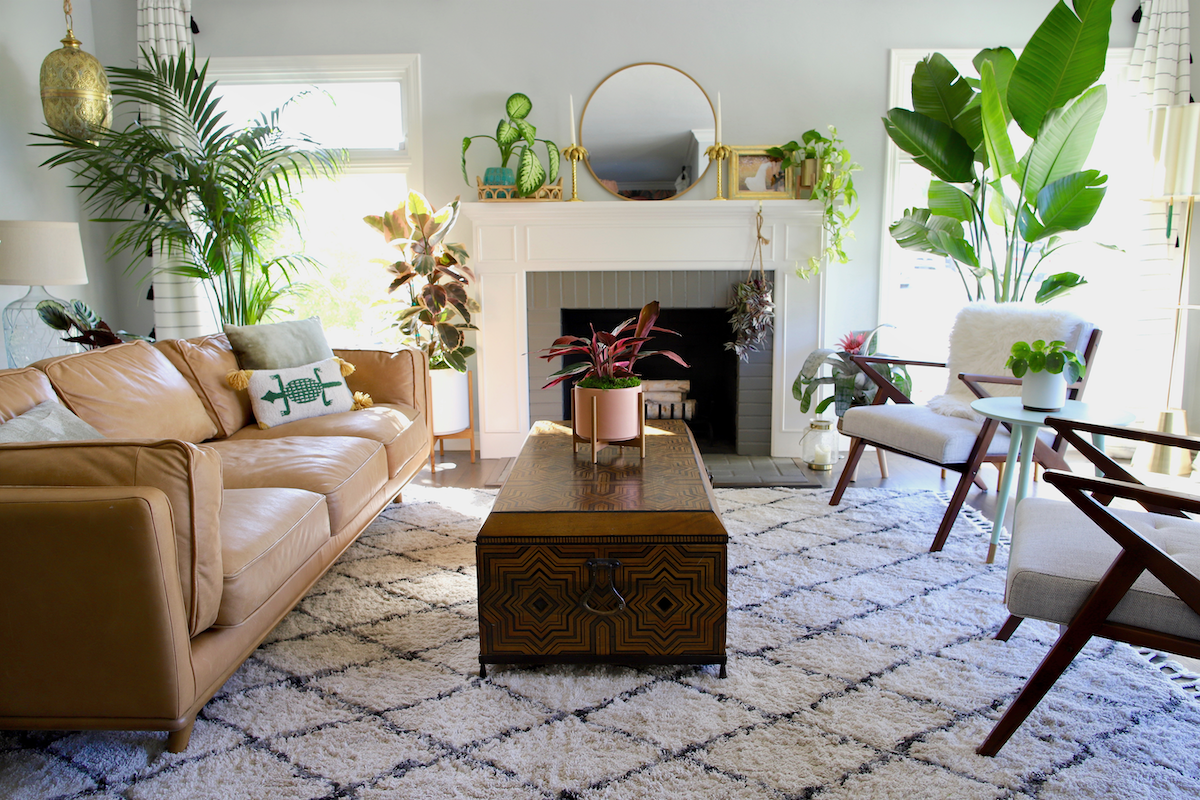Considering whether to get a real or faux Fiddle Leaf Fig Tree? One or the other might seem like the more obvious choice, but from appearance to pricing and of course, care requirements, read up on the pros and cons of each and see if a real plant or a faux one is the right path for you.
Faux Fiddle Leaf Fig: In a nutshell
Faux plants have come a long way over the years, and there are some pretty convincing options out there. However, plan on spending a pretty penny if you want something that looks and feels real, and not an obvious plastic stand in. High quality fake Fiddle Leaf Figs can cost over thousands of dollars. And no matter the price, fake Fiddle Leaf Figs can look great from a distance but will lack that authentic charm that a real plant offers.
Fake Fiddle Leaf Figs also come with none of the benefits real plants offer, such as cleaning the air, boosting your mood, or simply bringing joy by watching them grow and change over time. The main upside of a faux Fiddle Leaf Fig Tree is that it won’t require much care or upkeep, but there's something magical about a living, breathing Fiddle Leaf Fig: the intricate patterns of its leaves, the vibrant green hues – it's like nature's own masterpiece right in your home. No matter how high quality your fake Fiddle Leaf Fig is, it cannot equally replace the real thing.
Yes, they’re real!
Shop gorgeous Fiddle Leaf Fig Trees at leonandgeorge.com. Each plant is cleaned, trimmed, shined and treated for pests. Fiddles so perfect, people will think they’re fake.
Real Fiddle Leaf Fig Tree: The Lowdown
The main concern of many prospective Fiddle Leaf Fig Tree owners is the care required to keep this plant looking beautiful over time. Fiddles are part of the Ficus family and are known to be a finicky bunch. Generally speaking we do not always recommend the Ficus Lyrata for absolute beginners. That said, finding a nice balance of light and water is all it takes to keep this plant happy— it is actually quite low maintenance otherwise and does not require a lot of upkeep over time.
Furthermore, all Léon & George Fiddle Leaf Fig Trees come with simple instructions, a guarantee, and lifetime access to our team of certified Plant Doctors. Léon & George customers are fully supported and never alone on their journey to becoming a successful plant parent, Fiddle Leaf Figs included!
Care aside, the benefits of owning a real Fiddle Leaf Fig Tree are endless: not only is it an incredibly beautiful plant with an architectural look that shifts and changes over time, it also has major health benefits such as purifying the air and boosting mental health wellbeing.
Can you tell the difference between the real and fake Fiddle Leaf Fig Trees? Shop the real deal (on the left) at leonandgeorge.com. On the right, a faux Fiddle Leaf Fig Tree from Wayfair.
Cost and Investment
There are many budget-friendly options for faux Fiddle Leaf Fig Trees, but know that you will get what you pay for: low quality fake plants are not only an eyesore (that often look nothing like the real deal!), but they also can be harmful to our environment, made with synthetic materials that often end up in landfills.
A good quality fake Fiddle Leaf Fig that looks real will come at a hefty price, and depending on the size, can go for thousands of dollars.
Real Fiddle Leaf Fig Trees range anywhere from budget to premium pricing, and similar to the faux options, you will also get what you pay for. Never buy plants from big box stores, as they are not properly cared for and often come with pests. Though they may be cheap, that is almost a guaranteed loss as the odds of the plant thriving in your home are low.
Investing in a high quality Fiddle Leaf Fig will pay off in the long run: Léon & George plants come with plenty of support, from simple care instructions, a 45 day guarantee, and lifetime access to real Plant Doctors so that you can successfully grow this gorgeous and majestic plant at home.
And let’s be real: no amount of artificial charm can replace the joy of seeing your Fiddle Leaf Fig grow and thrive over the years!
Maintenance and Effort
There is obviously no real maintenance with a faux Fiddle Leaf Fig Tree, though you will have to dust it regularly like any piece of furniture. Fake Fiddles will stay the same forever, and that could be a pro or a con, depending on your love for the gardening game.
Real Fiddle Leaf Fig Trees are actually more low maintenance than their reputation allows. They require a lot of natural light, and if you get this part right, that’s half the battle. Apart from that, this plant prefers a regular watering routine to thrive. Once you’ve placed it in a nice bright area and settled into a healthy watering routine, this plant actually requires very little upkeep and maintenance over time. What’s more, real Fiddle Leaf Figs will continuously grow and sprout new leaves, bringing you joy for years and years to come. Rest assured that we have a massive library of resources to help care from your Fiddle Leaf Fig Tree, from watering tips to lighting and more.
So, Should you get a real or fake fiddle leaf fig?
While faux Fiddles have their perks, there's just no substitute for the real deal. The authenticity, the growth, the sheer joy of nurturing a living thing – it's unbeatable. We’re team real Fiddle Leaf Figs, and we’ve got a beautiful collection of this gorgeous ficus variety that you can order from the comfort of your own home!
And if you must go fake, we recommend reading up on different options for the best fake Fiddle Leaf Fig Tree at Wirecutter, where their expert testers have examined dozens of different brands and varieties and have identified the best ones.
the most beautiful Fiddle leaf fig trees money can buy
Shop Fiddle Leaf Figs of all shapes and sizes at leonandgeorge.com. Each plant comes with simple care instructions, a 45 Day Guarantee, and lifetime access to 24/7 Plant Doctor Support.




